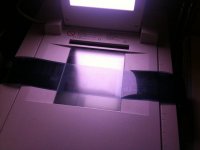mfogiel
Veteran
I read once about a guy who was putting the film in the sleeves on a lightbox, pressing with some books and turning the lightbox on for a couple of hours to generate some heat. Apparently this works perfectly, although I cannot confirm, as my lightbox has cold light...


